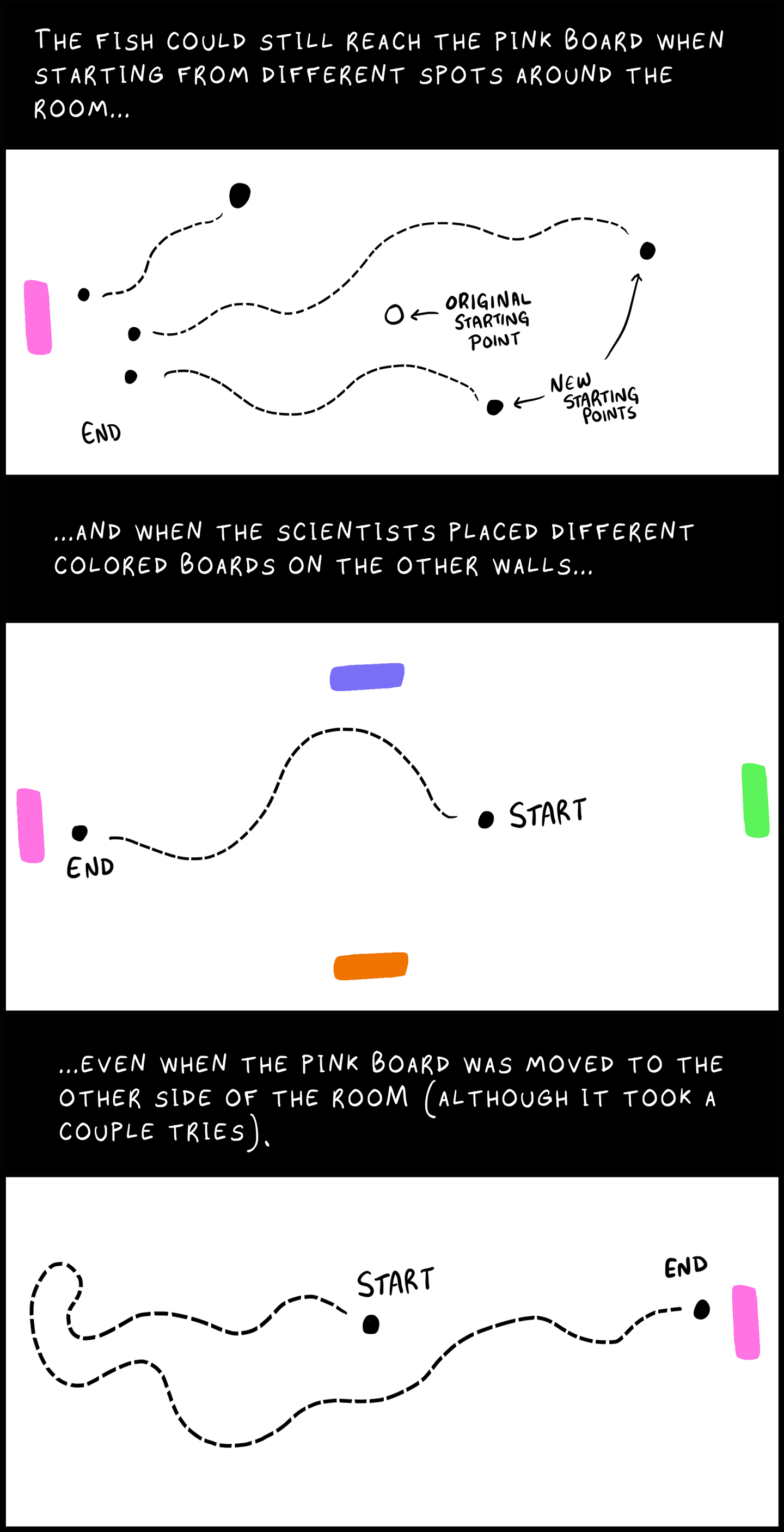One of TV’s most famous sea creatures, SpongeBob SquarePants, is a notoriously awful driver. But new research suggests that real-life water dwellers aren’t so bad behind the wheel.
In a new experiment, six goldfish learned to drive a tank of water on wheels around a room. This feat of steering suggests that fishes’ navigational abilities hold up even on land. That, in turn, hints that the internal sense of direction in fish has something in common with that of land animals. Researchers shared their findings February 15 in Behavioural Brain Research.
The study was done at Ben-Gurion University of the Negev. That’s in Beer-Sheva, Israel. The fish-mobile was armed with a camera to watch a fish inside the water tank. Whenever the fish swam near one of the tank’s walls, facing outward, the vehicle drove that way. (Watch a quick video showing the fish-mobile in action here.)
Goldfish learned how to drive during about a dozen 30-minute lessons. Researchers trained each fish to cruise from the center of a room toward a pink board on one wall. They did this by giving the fish a treat whenever it reached the pink board. During the first lesson, fish averaged about 2.5 successful trips to the target. During their final lesson, fish averaged about 17.5 successful trips.
The swimmers could still reach the pink board when starting from different spots around the room. And when the researchers tried tricks — placing decoy boards on other walls or moving the pink board across the room — the fish were not fooled. They still drove to the pink board to receive their treat.
“That was pretty conclusive that the fish actually navigate,” says Ohad Ben-Shahar. He’s a computer scientist who studies neuroscience. He also is a coauthor of the new study.
Kelly Lambert was “not completely surprised, but still intrigued” by the fish’s driving skills. Lambert is a behavioral neuroscientist. She works at the University of Richmond in Virginia. In her lab, she has taught rats to drive toy cars. Teaching fish to navigate outside their natural habitat takes such driving studies to the next level, she says. “I love the fish-out-of-water idea.”
Lambert wonders which animals make the best drivers. “I think we need an international race between the rats and the goldfish.”
![Image: a goldfish with human-like legs stands in front of an empty classroom.
[Fish speech bubble: Where’s all the water?]
Image text (top): Plenty of land animals know how to get around underwater. But is the opposite true?
Image text (bottom): If a fish had the lungs and legs to get around on land, could it navigate that unfamiliar world?"](https://www.sciencenewsforstudents.org/wp-content/uploads/2022/02/1030_WT_Goldfish_P1.png)
![Image: a goldfish in a square tank on wheels, with a camera apparatus on a pole taped to the tank. [Fish speech bubble: Sweet wheels!]
Image text (top): No one has the Disney magic to give a fish legs. So researchers at Ben-Gurion University of the Negev in Beer-Sheva, Israel, built a “car” for goldfish to drive.
Image text (bottom): The fish-mobile is a tank of water on wheels with a camera that watches the fish. If the fish swims near one of the tank’s walls, facing outward, the vehicle moves that way.](https://www.sciencenewsforstudents.org/wp-content/uploads/2022/02/1440_WT_Goldfish_P2_rev.png)
![Image: A goldfish in a tank on wheels heads towards a big pink square on the wall. [Fish speech bubble: To the drive-through!]
Image text (top): Researchers trained six goldfish to drive the tank from the center of a room toward a pink board on one wall. Whenever a fish reached the board, it got a treat.
Image text (bottom): The fish learned this skill in about a dozen 30-minute lessons.](https://www.sciencenewsforstudents.org/wp-content/uploads/2022/02/1440_WT_Goldfish_P3.png)
![Image: A graph showing how the fishes improved over time. In the upper right corner the fish is in the tank on wheels. [Fish speech bubble: How’d I do?]
Image text (top): The more fish drove, the better they got. They reached the pink board many more times during their final lesson than their first.
Image text (bottom): By the end of driver’s ed, the fish also took more direct routes, cruising to their goal faster.](https://www.sciencenewsforstudents.org/wp-content/uploads/2022/02/1440_WT_Goldfish_P4.png)

![Image: Fish in a tank leaving a science lab, headed out onto campus with a dog, with a scientist behind it, shouting and pointing.
[Scientist speech bubble: Stop that fish!]
[Fish speech bubble: Ready for a road trip?]
[Dog speech bubble: Woof!]
Image text: These results suggest that fishes’ navigational skills are not limited to their natural habitat. They may even have something in common with land animals’ sense of direction.](https://www.sciencenewsforstudents.org/wp-content/uploads/2022/02/1030_WT_Goldfish_P6_rev.png)

